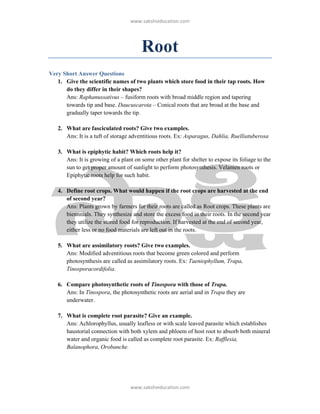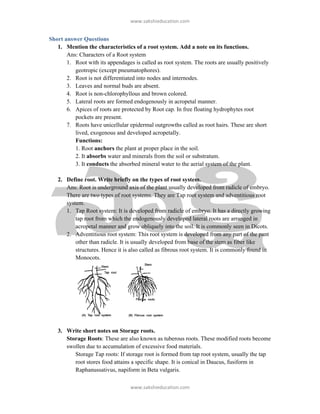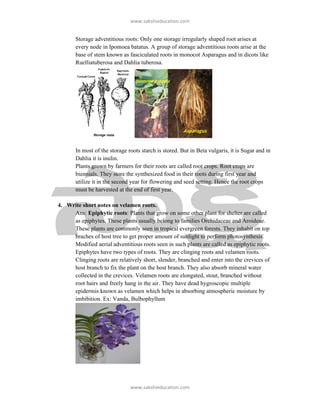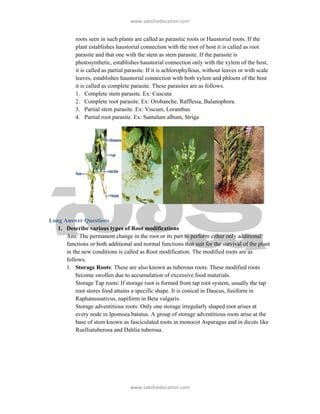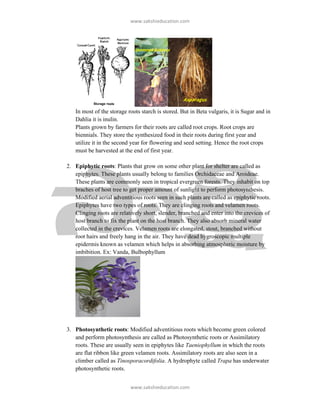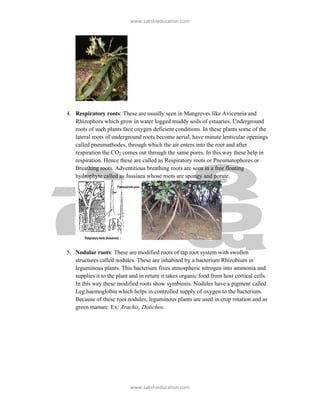The document discusses various types of root modifications in plants. It describes storage roots, which become swollen from accumulating excess food. Storage roots can develop from tap roots or adventitious roots. Velamen roots are modified adventitious roots of epiphytic plants that absorb water from the air. Respiratory roots in mangroves have pores that allow for gas exchange and respiration in oxygen-deficient soil. Nodular roots in legumes form symbiotic nodules inhabited by nitrogen-fixing bacteria. Parasitic roots establish connections to host plants to absorb water and nutrients.
